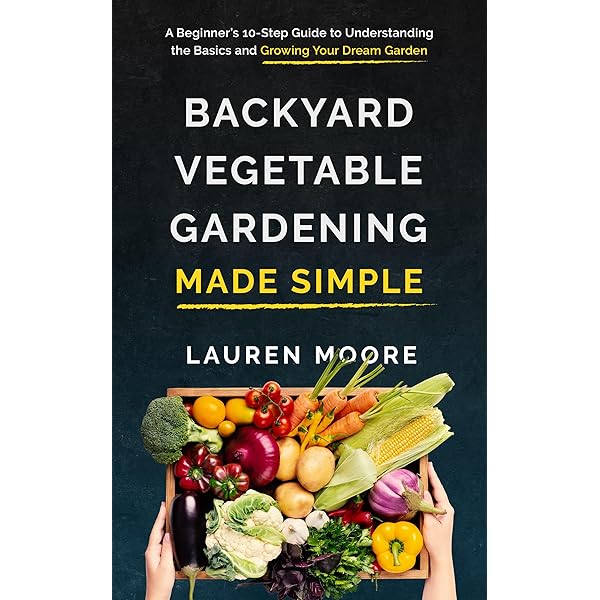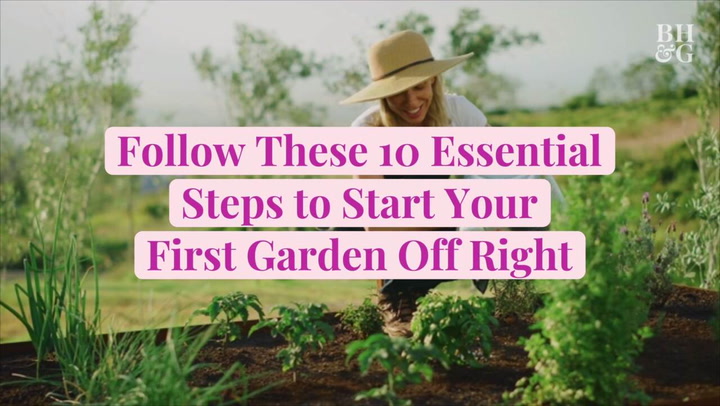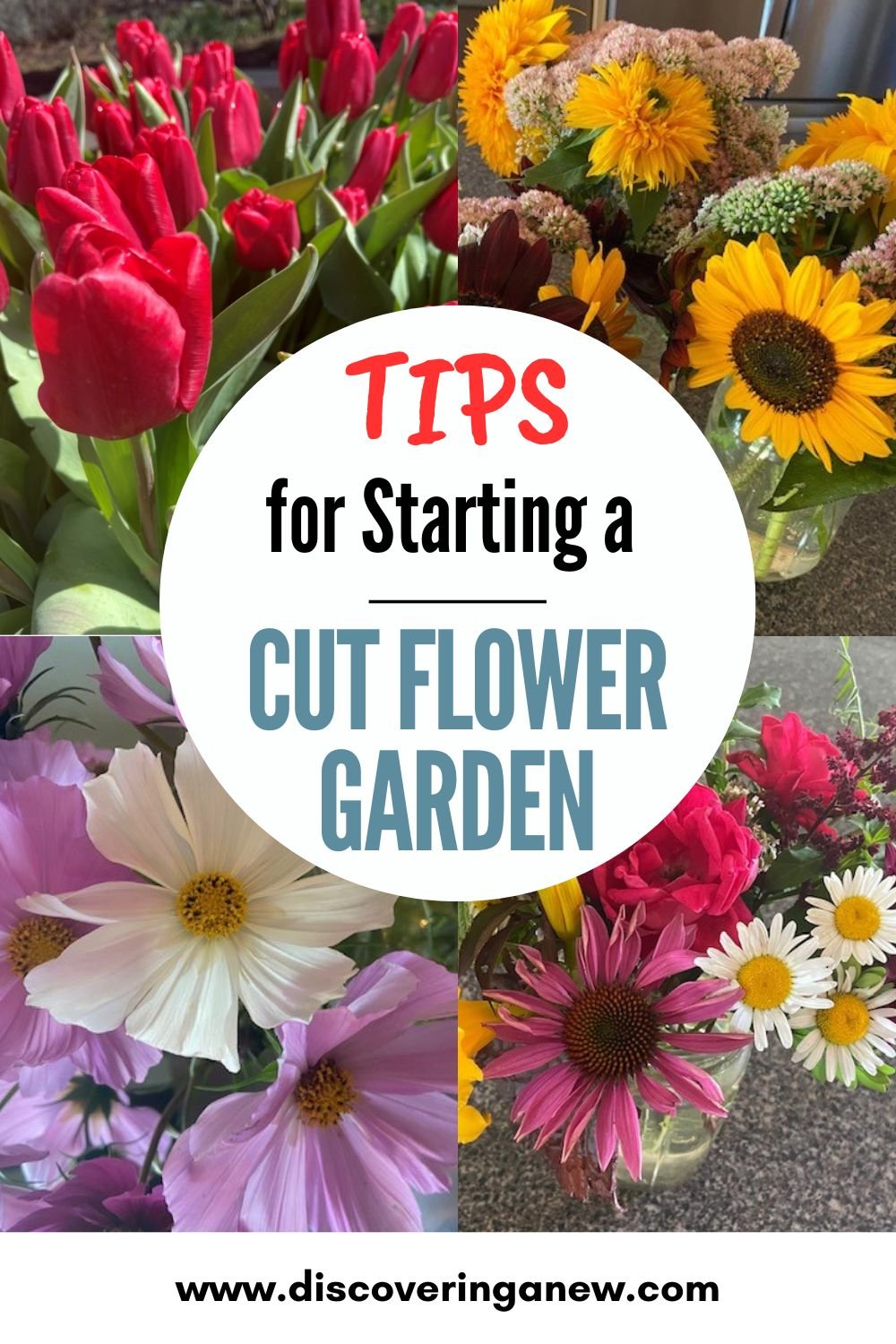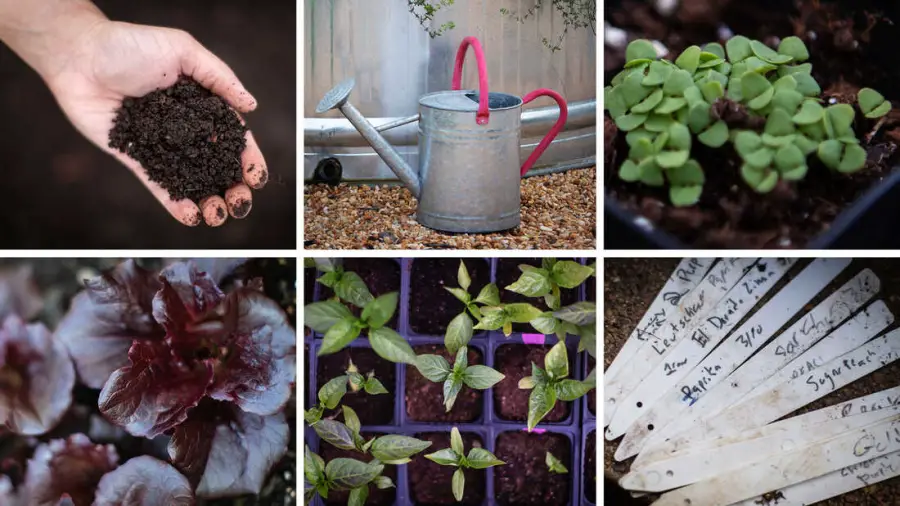To start a garden, choose a location with adequate sunlight, and decide what plants to grow. Prepare the soil and plant seeds or seedlings with proper spacing.
Embarking on the journey of starting a garden brings a blend of excitement and potential for those favoring self-sustenance and a touch of nature. Gardening beginners often imagine turning a patch of land into a vibrant tapestry of vegetables, flowers, and herbs.
How to Start a Garden: The process, while deeply rewarding, requires basic knowledge and preparation. Beginning gardeners should focus on understanding their climate, soil type, and the specific needs of their chosen plants. This initial groundwork lays the foundation for a thriving garden that can bolster not only the local ecosystem but also provide a serene retreat and a source of fresh produce. With the right approach, even novices can cultivate a green space that flourishes throughout the growing season, transforming novice green thumbs into proud gardeners.
Table of Contents
Discover Your Motivation
Starting a garden creates a path to joy, health, and connecting with nature. First, understand your motivation. Is it the color-rich flowers or homegrown fresh veggies that excite you? Knowing the ‘why’ shapes your gardening journey, from choosing seeds to harvesting.
The Joy Of Gardening
Gardening offers endless delight. As a beginner, you’ll find satisfaction in nurturing plants. The sight of the first sprouts, the unfolding leaves, and vibrant blooms are simple pleasures to anticipate. Gardening isn’t just about the end result; it’s the serene moments spent amid nature that truly enrich.
- Brings creativity to life
- Encourages patience and care
- Makes outdoor time fun and rewarding
Health And Sustainability
Gardening boosts well-being and supports the planet. Cultivating your own garden means fresh, pesticide-free produce right at your doorstep. You contribute to a cleaner environment by reducing your carbon footprint. Engaging in this outdoor activity also promotes physical health and mental clarity.
| Health Benefits | Sustainability Perks |
|---|---|
| Exercise through digging and planting | Less food transport pollution |
| Stress relief in a natural setting | Supports local ecosystems |
| Nourishment from fresh harvests | Conserves soil and water quality |

Credit: www.amazon.com
Choosing The Right Spot
Embarking on your gardening journey starts with a crucial step: Choosing the Right Spot. A prime location sets the stage for vibrant plant growth. Consider sunlight exposure and proximity to a water source for thriving flora.
Sunlight Matters
Plants crave sunlight to flourish. Most vegetable gardens need at least six hours of direct sunlight daily. To ensure your plants get their sun fix, observe your potential garden spot. Watch the area for a day to note how the sunlight moves across the space. Pick a spot that basks in plenty of natural light.
- Full sun locations suit most veggies and herbs.
- Partial shade might work for greens or cool-season crops.
Access To Water
Easy water access is vital for plant health. A garden near a hose or watering system saves time and energy. Consider the distance from your water source to the garden. A spot too far could make watering a challenge. Aim for a location where dragging a hose or carrying a watering can is effortless.
| Water Source | Distance to Garden | Watering Convenience |
|---|---|---|
| Hose | Close | High |
| Rain barrel | Medium | Medium |
| Watering can | Far | Low |
Remember, plants depend on you for their water. A conveniently located water source is key to a lush, bountiful garden.
Deciding What To Grow
Selecting the right plants is a crucial step in starting your garden journey. Consider factors like climate, soil type, and sunlight when making your choices, ensuring a robust garden that thrives.
Starting a garden brings joy and freshness to your life. Choosing what to plant is a thrilling first step. Will it be vegetables for a homegrown salad? Perhaps juicy fruits to enjoy in the summer sun? Or maybe fragrant flowers to enhance your garden’s beauty?
Vegetables, Fruits, Or Flowers?
- Vegetables: Great for cooking and health.
- Fruits: Sweet treats that trees and vines offer.
- Flowers: They paint your garden with colors.
Pick based on what excites you. Consider the space you have. Some plants need more room.
Seasonal Considerations
Plants have preferred seasons. They need the right weather to grow strong and healthy.
| Season | Plant Types |
|---|---|
| Spring | Lettuce, Peas, Tulips |
| Summer | Tomatoes, Berries, Sunflowers |
| Fall | Pumpkins, Apples, Chrysanthemums |
| Winter | Kale, Citrus, Pansies |
Choose plants that match your area’s climate. Check a local planting calendar. Your garden dreams will come to life!
Gardening Tools And Supplies
Welcome to the fascinating journey of starting your own garden! Before you start planting, it’s crucial to gather the right gardening tools and supplies. These essentials will help your garden flourish right from day one. Whether you have a spacious yard or a small balcony space, these items will lay the foundation for a thriving oasis.
Basic Tools For Beginners
Embarking on your gardening adventure calls for some key tools:
- Gloves: Protect your hands with durable, fitting gloves.
- Spade: For digging and moving soil, a spade is crucial.
- Trowel: Use a trowel for planting and weeding with ease.
- Rake: A rake helps in leveling soil and clearing debris.
- Pruners: Keep plants healthy with sharp pruners for trimming.
- Watering can: A watering can with a long spout offers precision.
- Hoe: A hoe is perfect for weeding and cultivating soil.
Soil And Compost Essentials
Your garden’s success starts with the soil. Amend it with these supplements:
- Test Kit: Test your soil to find out what it needs.
- Organic Soil: Use organic soil for a nutrient-rich base.
- Compost: Enrich soil and reduce waste with compost.
- Mulch: Mulch conserves water and deters weeds.
- Fertilizer: Choose a fertilizer tailored to your plants.
Remember,
With these basic tools and soil amendments, your garden is set to grow. Enjoy the process as your garden takes root and flourishes under your care!
Understanding Your Soil
Gardening starts with understanding your soil. A thriving garden requires the right foundation. Soil type affects water retention, nutrition availability, and root growth. Knowing your soil type helps you choose the right plants and care for them properly. Let’s delve into soil testing and improving soil quality.
Soil Testing
Soil testing determines soil health. This test measures pH level, nutrients, and contaminants. Use a simple soil testing kit from your local garden store. Follow these steps:
- Gather soil samples from various garden spots.
- Mix soil in a clean container; remove stones and debris.
- Follow the testing kit instructions carefully.
- Note the pH and nutrient levels provided.
Results guide you in making the right adjustments for your plants.
Improving Soil Quality
Improving soil quality makes plants healthier. Use these practices:
- Add organic matter: Compost or manure enhances soil structure.
- Use mulch: Mulch reduces weeds and preserves moisture.
- Aerate your soil: Aeration helps oxygen reach plant roots.
Improving soil takes time. Regular care leads to a bountiful garden.

Credit: www.bhg.com
Garden Planning And Design
Beginning a garden brings excitement and joy. Success starts with a strong plan and thoughtful design. Consistently think ahead and choose what works best for your space. Let’s dive into shaping your green sanctuary with intention and care.
Layout Strategies
Creating a functional layout is key in your garden journey. A smart design ensures easy access and growth. Follow these steps to craft an effective garden layout:
- Measure your garden area.
- Sketch a diagram on paper or use online tools.
- Include paths for walking without damaging plants.
- Space your plants properly. Remember, they grow!
- Sunlight is crucial. Position plants based on their needs.
Companion Planting Benefits
Companion planting is a smart strategy that pairs plants benefiting each other. This method can improve the health and yield of your garden. Here are the advantages of companion planting:
| Benefit | Description |
|---|---|
| Pest Control | Certain plants repel pests, protecting neighbors. |
| Pollination | Increase the chances of plants pollinating by attracting bees. |
| Space Efficiency | Maximize garden space by combining plants with differing growth habits. |
| Soil Health | Different plants contribute differently to soil enrichment. |
Companion planting ensures that your garden is a harmonious ecosystem. Your plants will thrive together, creating a lush and productive garden.
Preparing The Garden Bed
Embarking on your gardening journey begins with a vital step: Preparing the Garden Bed. A well-prepared bed supports healthy plant growth. Follow these easy steps to create the perfect home for your plants.
Clearing The Area
First things first, clear any debris and weeds. This makes space for your plants to grow. Use gloves and ensure the area is free from stones, sticks, and roots.
- Pick up larger objects by hand.
- Use a rake for smaller debris.
- Trim surrounding grass or overhangs.
Tilling And Fertilizing
Loosen the soil with a tilling tool to enhance aeration. Tilling makes roots grow deep and strong. It’s best to till when the soil is dry to avoid clumps.
- Test the soil moisture. It should crumble easily.
- Till to a depth of about 12 inches.
After tilling, enrich the soil with compost or fertilizer. Spread the fertilizer evenly and mix into the top 6-8 inches of soil. This feeds your plants and boosts growth.
| Fertilizer Type | Application Method | Benefits |
|---|---|---|
| Compost | Spread evenly | Improves soil structure |
| Organic Fertilizer | Mix well | Releases nutrients slowly |
| Chemical Fertilizer | Follow instructions | Quick nutrient boost |

Credit: www.discoveringanew.com
Planting Your Garden
Welcome to the heart of gardening – Planting Your Garden. The thrill begins as seeds push through soil and seedlings find their new home. Embrace the ease of starting your green haven with these straightforward steps. Both novices and seasoned gardeners can find joy and success in the journey from planting to blooms.
Seeding Techniques
Mastering the art of sowing seeds is essential for a flourishing garden. Follow these simple seeding techniques to kickstart your garden:
- Read the Seed Packet: It holds vital information like planting depth and spacing.
- Create a Plan: Sketch your garden layout, considering sunlight and plant companionship.
- Prepare the Soil: Ensure it is loose, well-drained, and rich in compost.
- Sow Seeds: Use a finger or tool to make holes at the proper depth. Drop seeds in gently.
- Cover and Water: Fill the holes with soil and sprinkle water without causing erosion.
Remember: some seeds need pre-soaking or scarification before planting. Check the packet for guidance!
Transplanting Seedlings
Once your seeds transform into young seedlings, it’s time to move them. Careful transplanting ensures they thrive:
- Select the Strong: Choose healthy-looking seedlings, avoiding ones with leggy stems or yellow leaves.
- Time It Right: Transplant in cool weather, preferably early morning or late afternoon.
- Prep the Garden Bed: Make it welcoming with moist soil and a dose of starter fertilizer.
- Handle with Care: Use a spoon or fork to lift seedlings, keeping the roots intact.
- Plant: Make a hole in your garden bed, place the seedling in, and gently cover the roots.
- Water Well: Secure the seedlings with a good watering to help them settle.
Tip: Support them with stakes if needed and offer shade from harsh sun the first few days.
Watering And Maintenance
Watering and Maintenance are key to ensuring your newly started garden thrives. Proper hydration and care sustain plant health, promoting lush growth and bountiful harvests. Here are practical steps for beginners to make garden maintenance simple and effective.
Irrigation Tips
Consistent watering creates a garden that blossoms. Yet, too much or too little can harm your plants. Timing is crucial; early morning or late afternoon prevents evaporation. Use soaker hoses or drip irrigation for deep water penetration. This method encourages roots to grow deeper, strengthening the plants. Always check soil moisture; it should be moist but not waterlogged. A weekly soak is better than daily light sprinkles.
A watering schedule keeps your garden’s thirst quenched.
- Seedlings: Daily, as they establish roots.
- Vegetables: Deeply, once or twice a week.
- Shrubs and trees: Weekly, adjusting for rain.
Mulching And Weeding
Mulch is a garden’s best friend. It locks in moisture, keeps weeds at bay, and enriches the soil. Organic mulches, like straw or wood chips, improve soil as they break down. Aim for a 2-inch layer around plants, avoiding the stems to prevent rot.
Weeds compete with your plants for water and nutrients. Regular weeding keeps your garden healthy. Pull weeds close to the root to remove them effectively. Use garden tools for tough weeds and keep the soil’s surface disturbed to prevent weed seeds from germinating.
| Mulch Type | Benefits |
|---|---|
| Straw | Prevents weeds, retains moisture |
| Wood Chips | Adds nutrients as it decomposes |
Dealing With Pests And Diseases
Welcome to the engaging world of gardening, where lush greenery meets the joy of nurturing life from the soil! One crucial aspect every green thumb needs to master is the art of dealing with unwelcome garden visitors: pests and diseases. In this section, we’ll explore straightforward methods to keep your garden thriving by managing these challenges effectively.
Organic Pesticides
Organic pesticides keep gardens safe without harming the environment. These solutions respect nature’s balance while tackling insects and diseases that can harm plants.
- Neem oil: A natural insecticide that fights pests.
- Soap spray: Gentle on plants but tough on insects.
- Chili pepper spray: Deters various garden pests.
- Garlic mix: Acts as a broad-spectrum pesticide.
Prevention And Control
Preventing pests and diseases is easier than fighting them. Regular checks and balanced ecosystems are key. Here’s how:
| Preventive Measure | How It Helps |
|---|---|
| Crop rotation | Avoids depleting soil nutrients. |
| Healthy soil | Creates a robust foundation for plants. |
| Companion planting | Natural way to deter pests. |
| Regular cleaning | Removes habitats for pests. |
Harvesting Your Bounty
Reap the rewards of your gardening journey by harvesting your bounty. The sight of ripe vegetables and vibrant flowers is a testament to your efforts. Picking the perfect moment and storing your produce correctly maximizes freshness and flavor.
When To Harvest
Timing is key to a successful harvest. Here’s how you can know it’s time:
- Tomatoes turn bright red.
- Lettuce leaves feel crisp.
- Carrots peep out of the soil.
- Cucumbers reach the size of your hand.
- Flowers are full and vivid.
Check every day once crops start to ripen. Use your hands to feel the firmness. Smell and taste tests help too.
Storing Your Produce
Preserve your garden’s bounty with these storage tips:
| Produce | Storage Method | Shelf Life |
|---|---|---|
| Tomatoes | Room Temperature | 1 week |
| Lettuce | Refrigerator Crisper | 1-2 weeks |
| Carrots | Moist Sand | Several months |
| Cucumbers | Refrigerator Shelf | 1 week |
| Flowers | Vase with Water | 3-7 days |
Wrap greens in damp towels. Store root vegetables in a cool place. Dry and freeze herbs for long-term use. Remember to label everything with dates for tracking.
Extending Your Garden Beyond The Basics
Extending Your Garden beyond the Basics takes your gardening adventure to exciting new heights. Your first plot of soil may now flourish with fresh produce and vibrant flowers. Ready for the next challenge?
Let’s dive into cultivating diversity and taking advantage of every space in your garden oasis!
Introducing New Varieties
Breathing new life into your garden means welcoming new plant species. With each new variety, your garden’s resilience and allure grow. Achieve this by:
- Researching: Find plants that complement and coexist with your current picks.
- Experimenting: Try unique herbs, heirloom vegetables, or exotic flowers.
- Rotating crops: Preserve soil health and thwart pests by changing plant locations annually.
Exploring Vertical Gardening
Vertical gardening is a savvy use of any small space. It encourages you to look up and capitalize on the vertical real estate. Easily implemented by:
- Installing trellises for climbing plants like cucumbers and peas.
- Using wall planters to grow herbs and succulents— ideal for urban gardens.
- Crafting a DIY pallet garden to showcase a spectacular array of greens and blooms.
Embrace these steps and watch your garden transform into a thriving, three-dimensional masterpiece.
Frequently Asked Questions For How To Start A Garden: 10 Easy Steps For Beginners
What Do I Need To Start A Garden?
To begin gardening, you need basic tools like a shovel, rake, and hoe. It’s essential to select the right location with ample sunlight, and consider starting with easy-to-grow plants. Soil quality is key, so testing and amending it with compost may be necessary.
How To Choose The Best Plants For Beginners?
Opt for hardy, low-maintenance plants, such as sunflowers, marigolds, or tomatoes. These can withstand slight neglect and variable conditions. Check your region’s hardiness zone for suitable plant choices. Local nurseries can also provide recommendations based on your climate.
What Is The Best Time To Start Gardening?
The ideal time to start a garden is in early spring after the last frost. However, some vegetables like lettuce can be planted in early fall. Check planting guides for your area to time your gardening activities for the best plant growth outcomes.
How Often Should I Water My Garden?
Watering needs depend on your plants and climate. Generally, an inch of water per week, including rainfall, suffices. For hotter climates or fast-draining soils, watering may be needed more frequently. Always check the soil’s moisture level before watering to avoid overhydration.
Conclusion
Embarking on your gardening journey is simpler than it seems. By following the ten steps outlined, you’ll nurture a thriving green space. Remember, patience and persistence are key. Dive in, enjoy the process, and soon you’ll marvel at the seed of effort blooming into your very own garden oasis.
Happy gardening!
